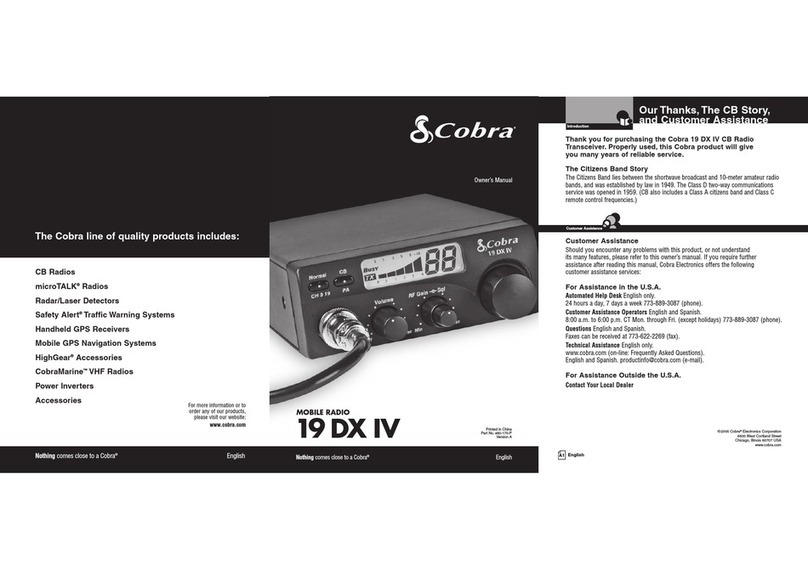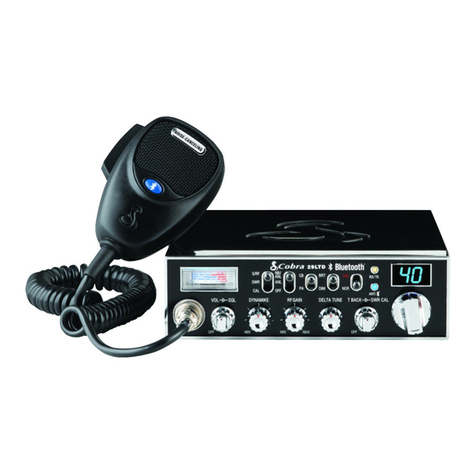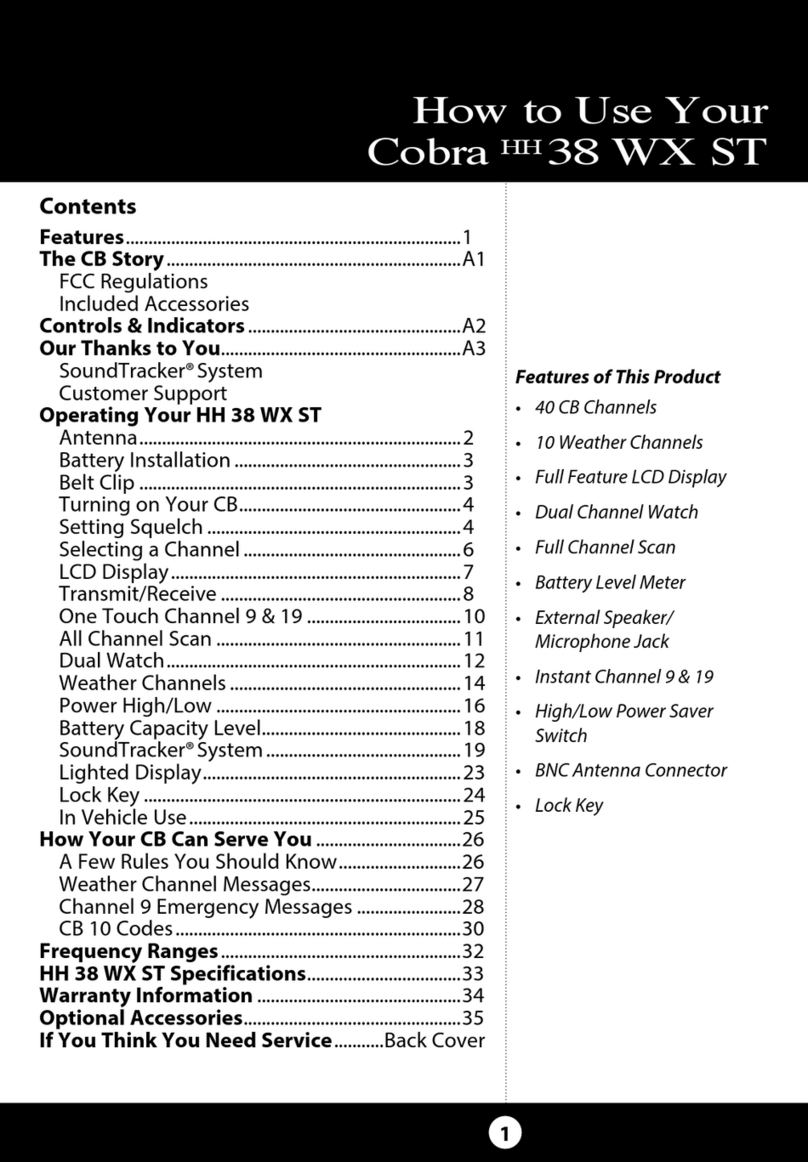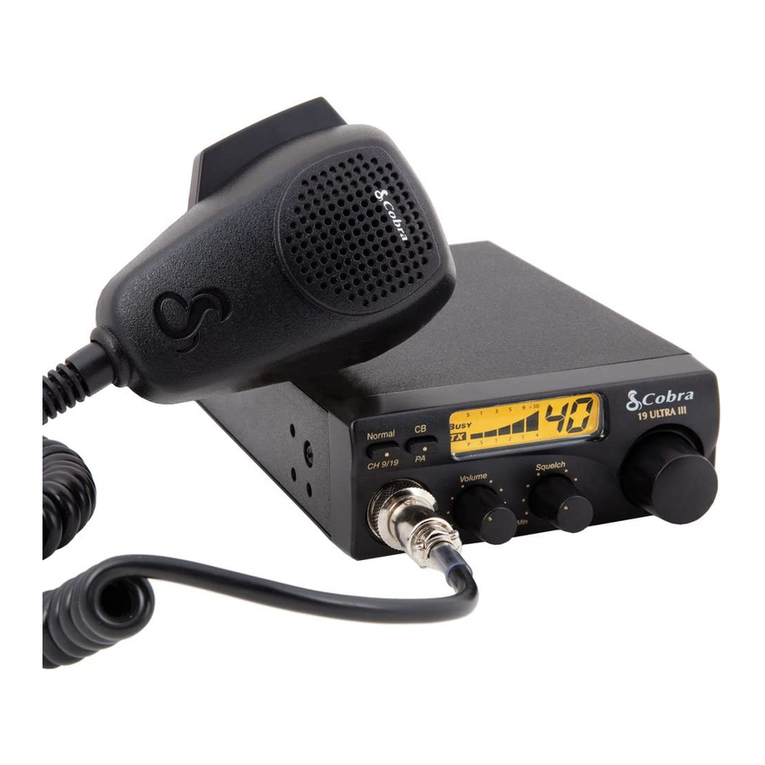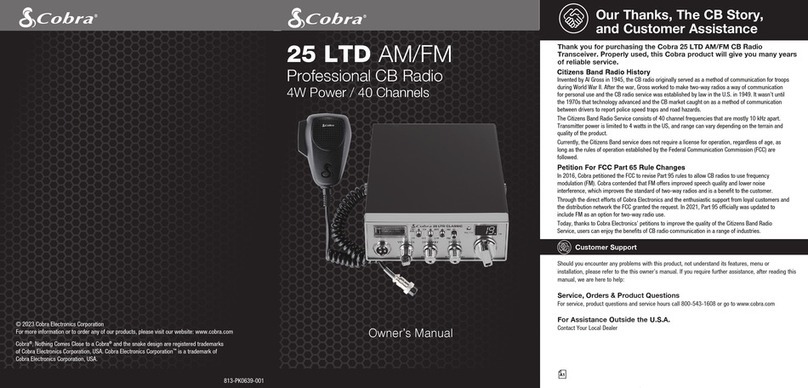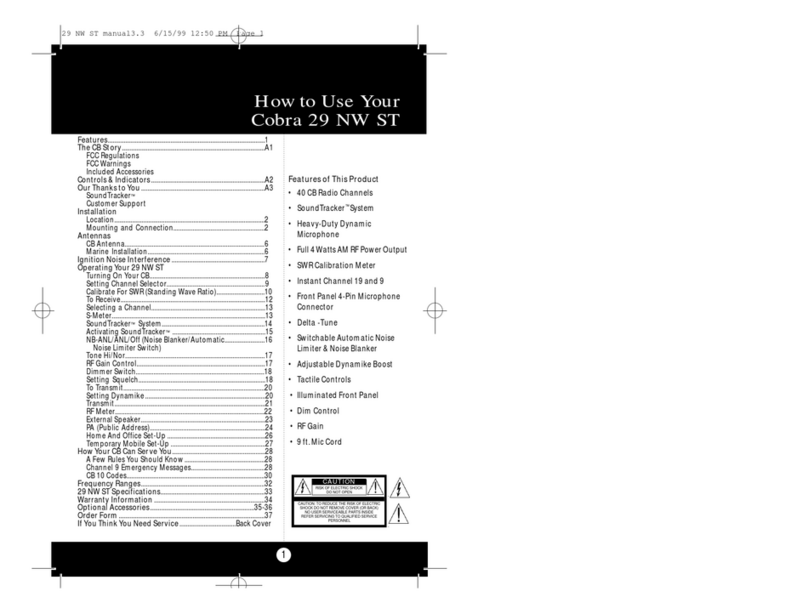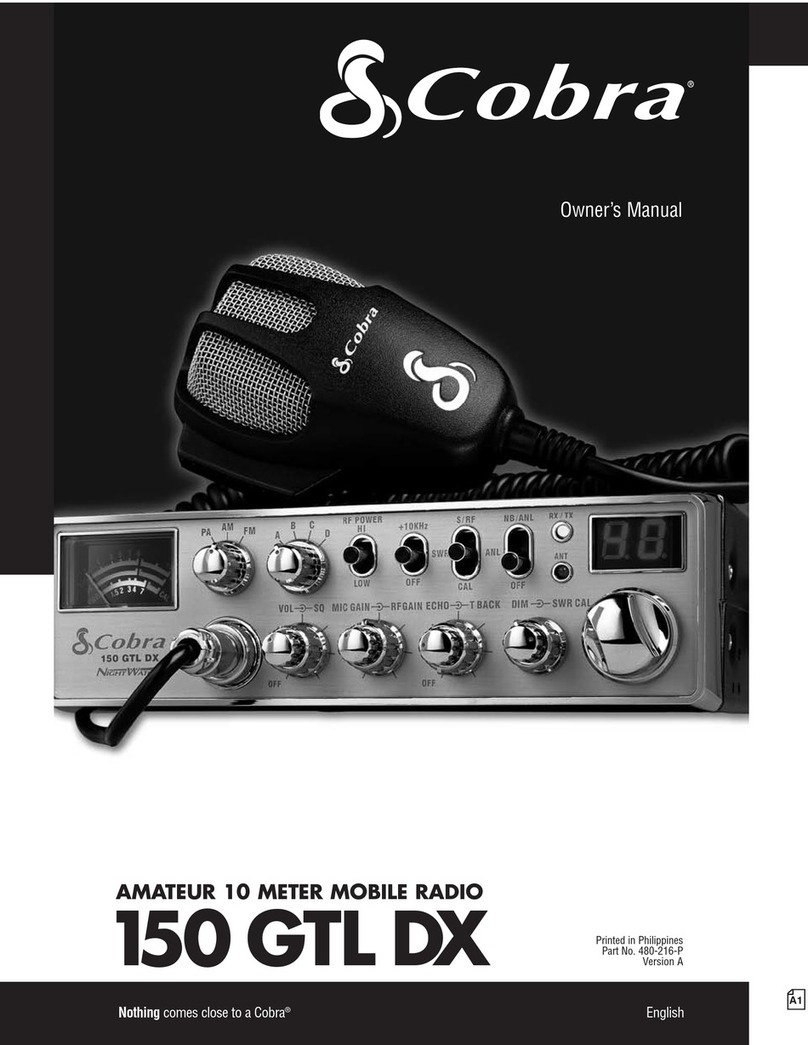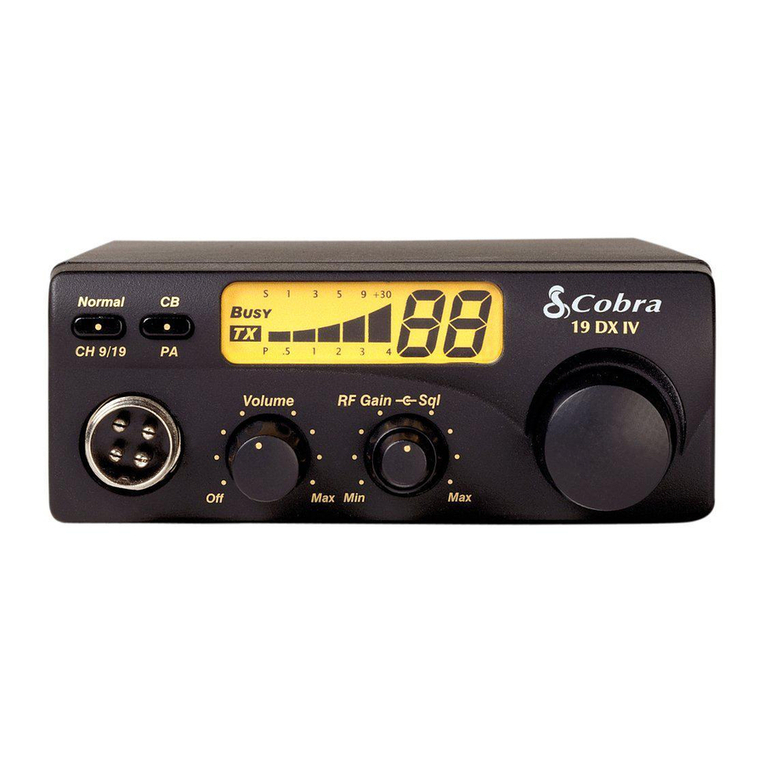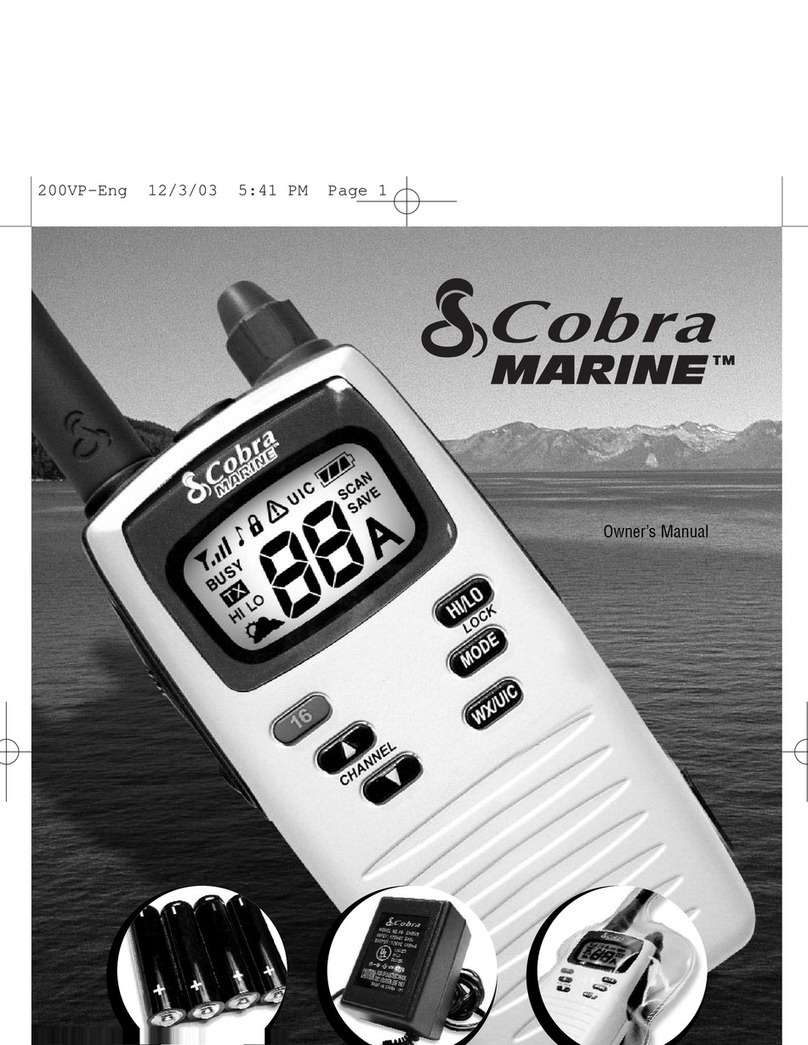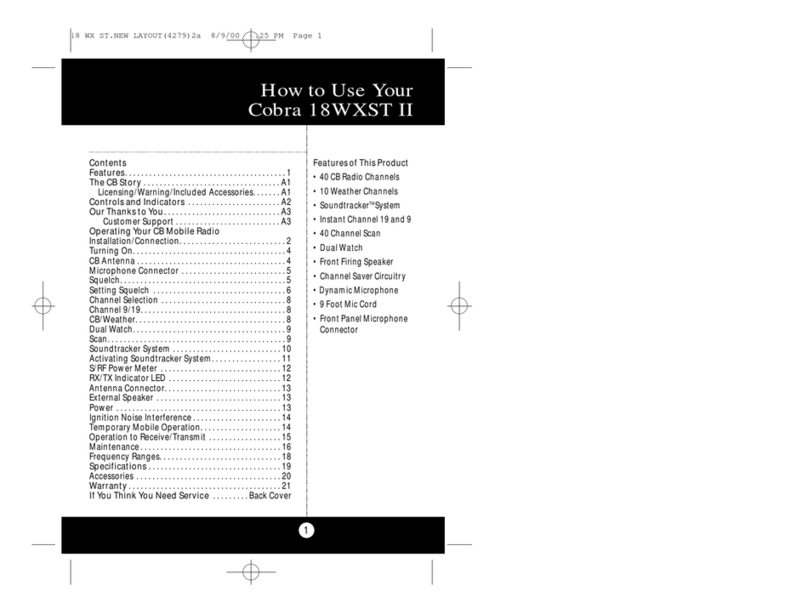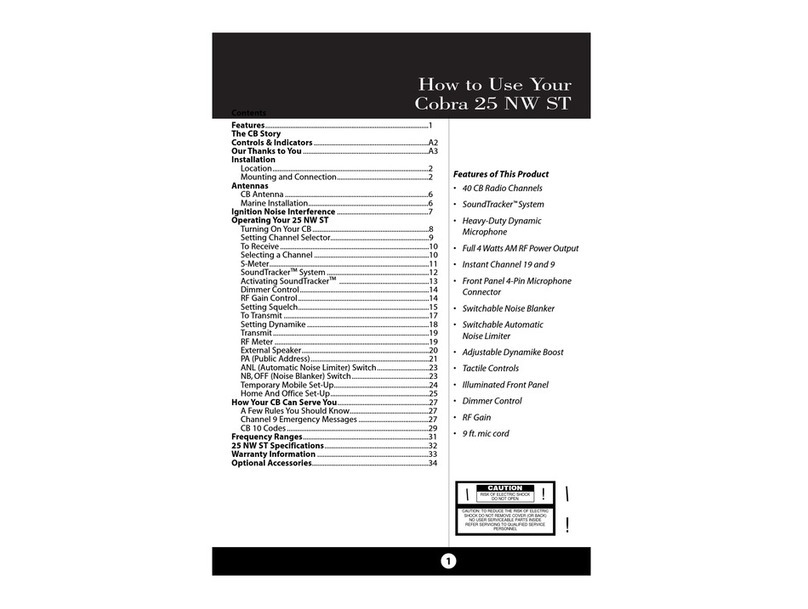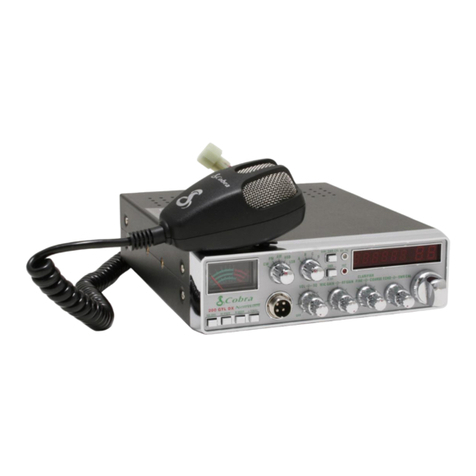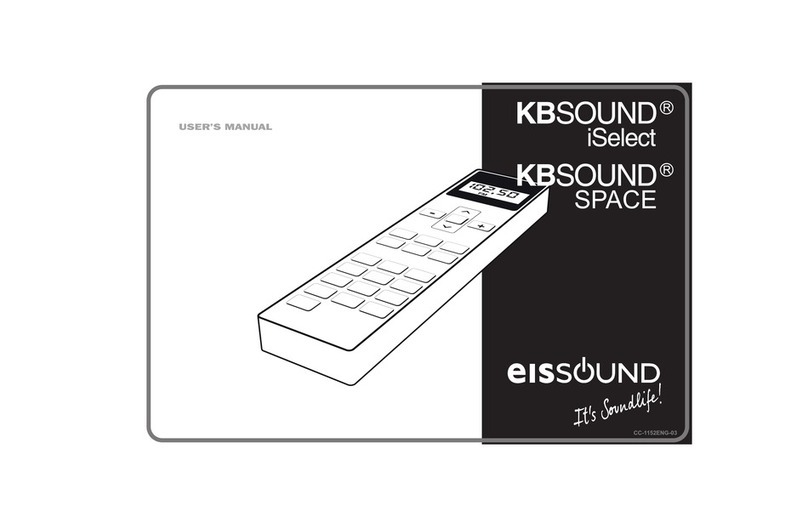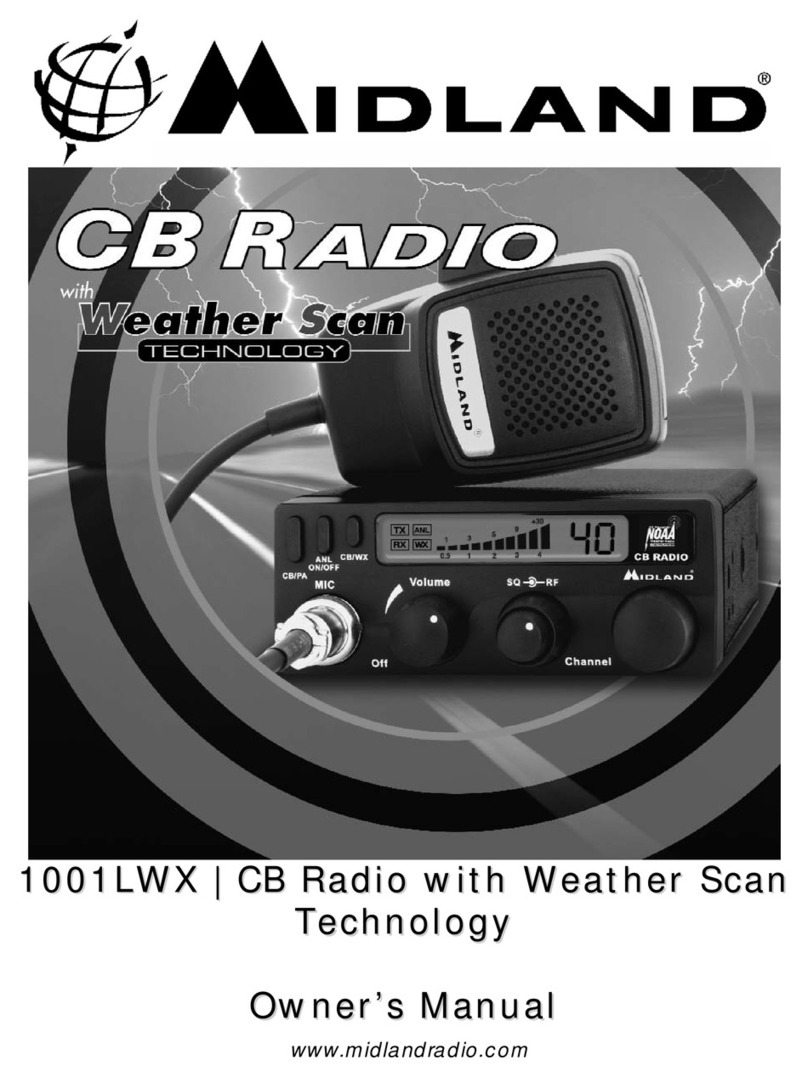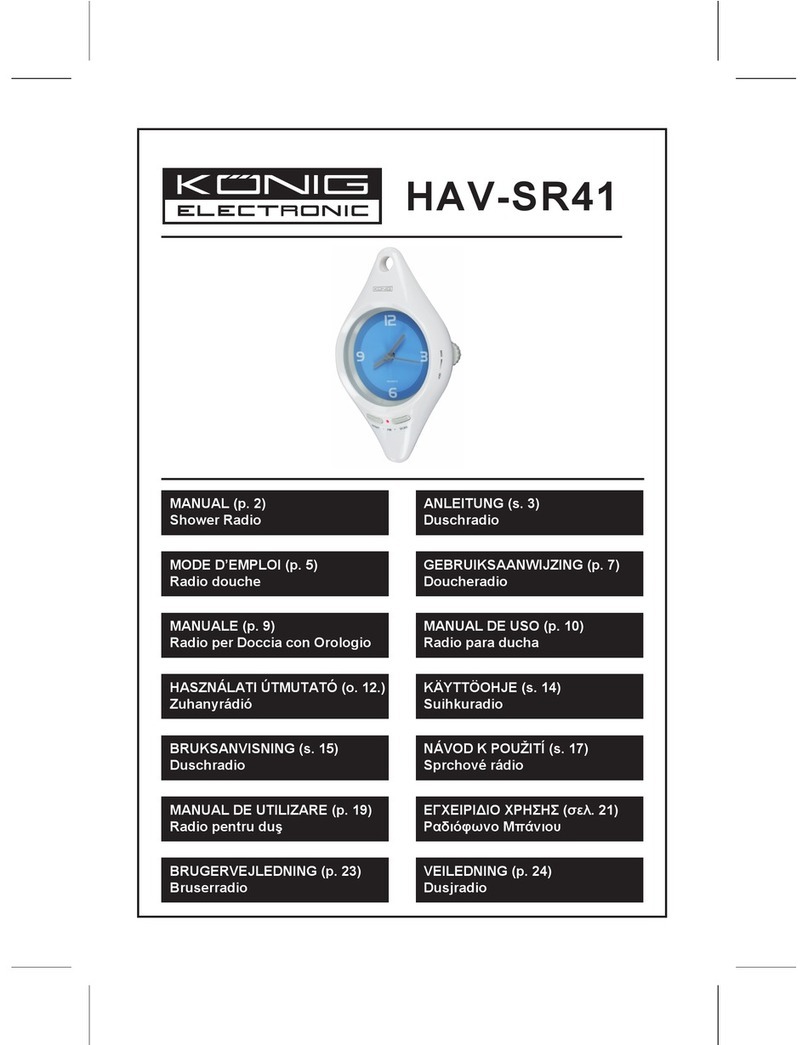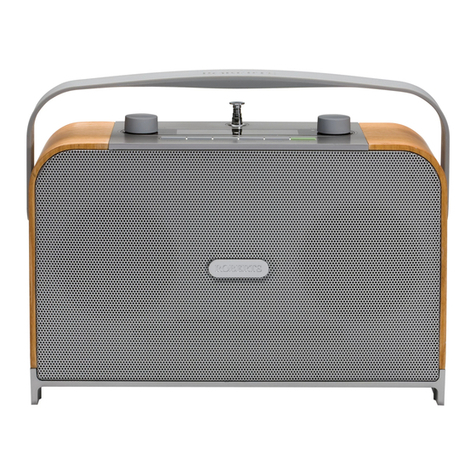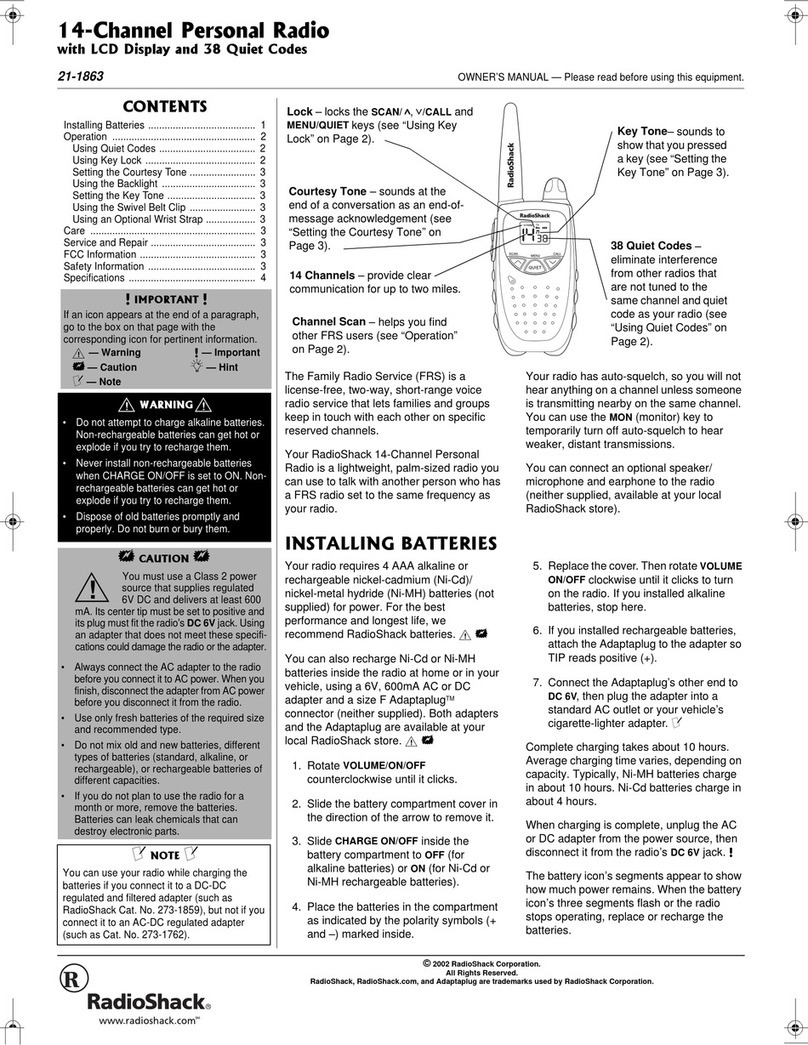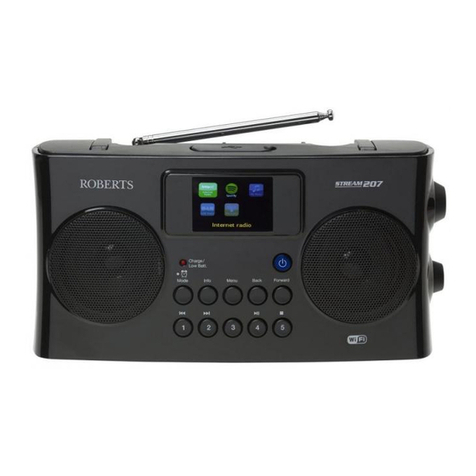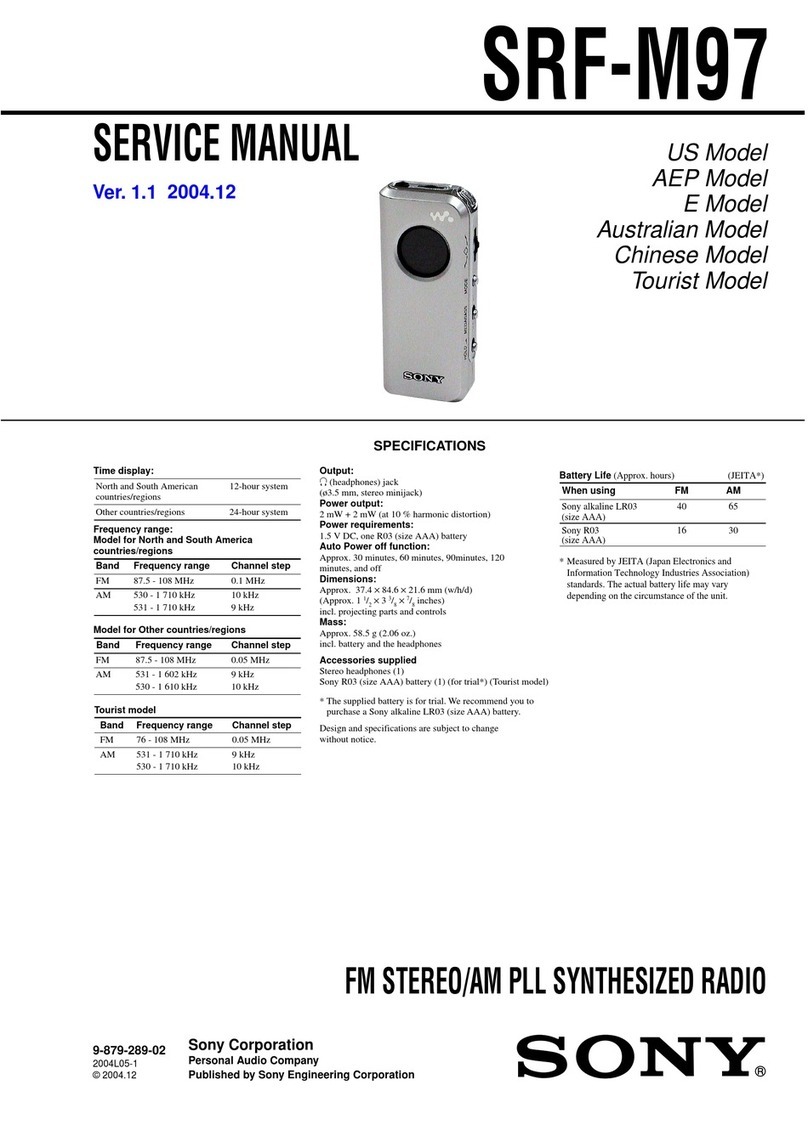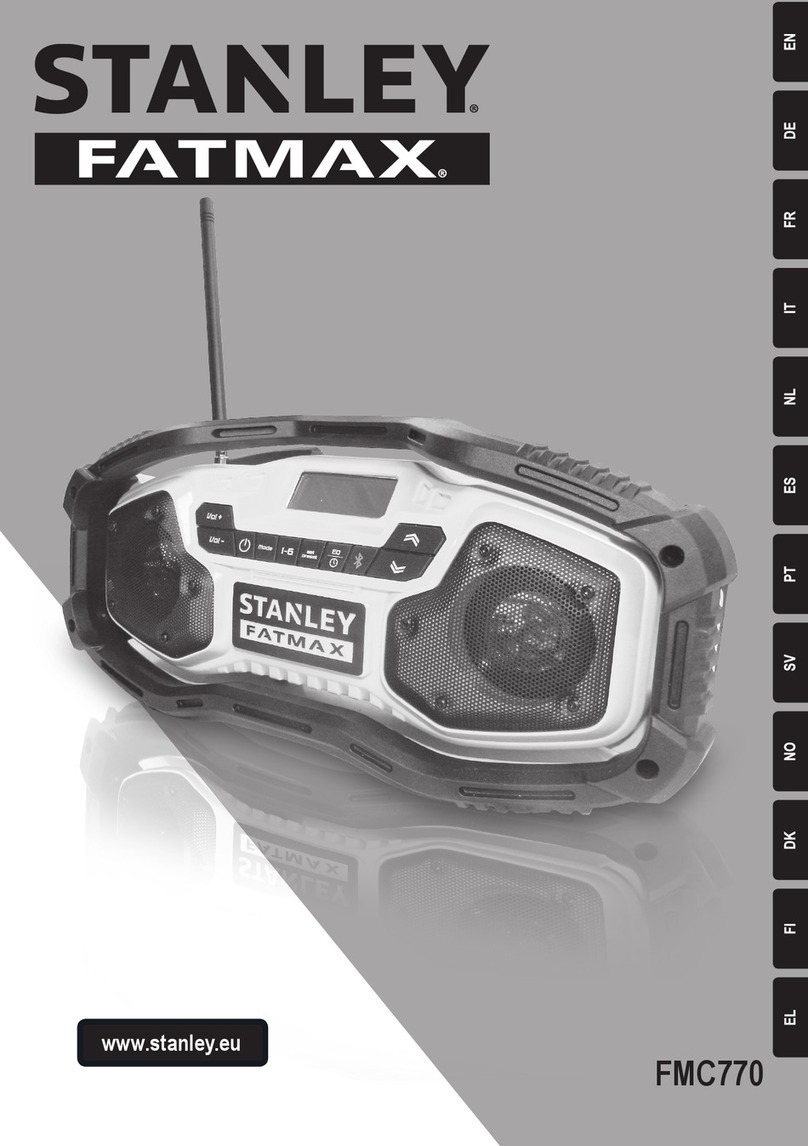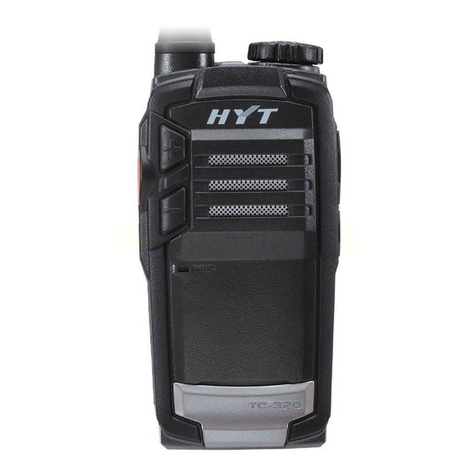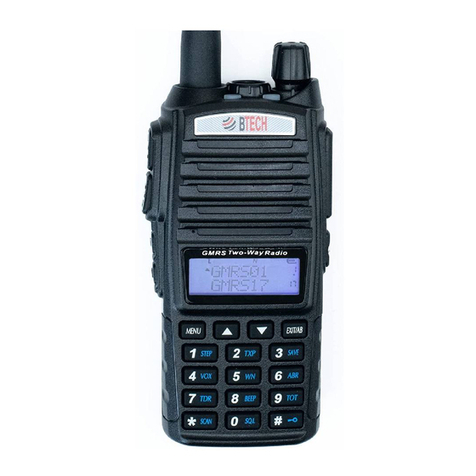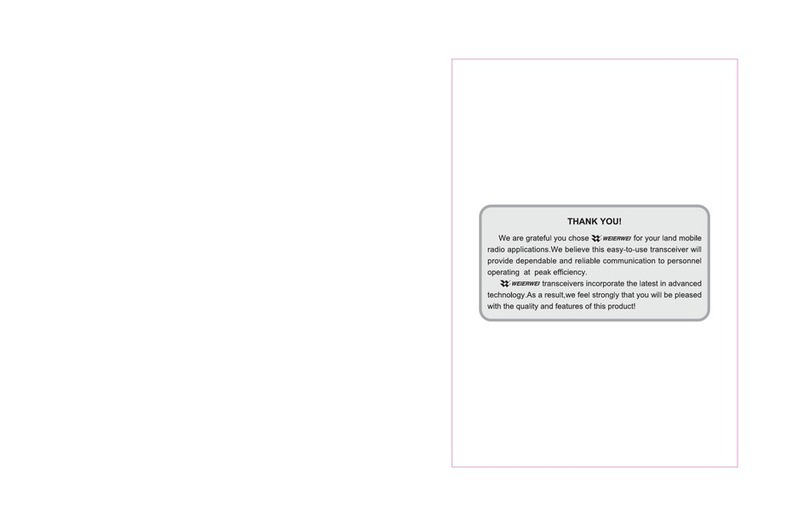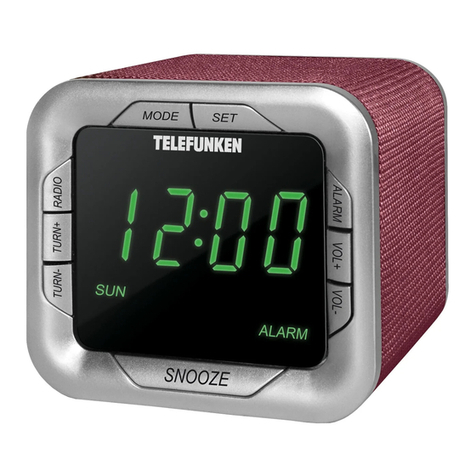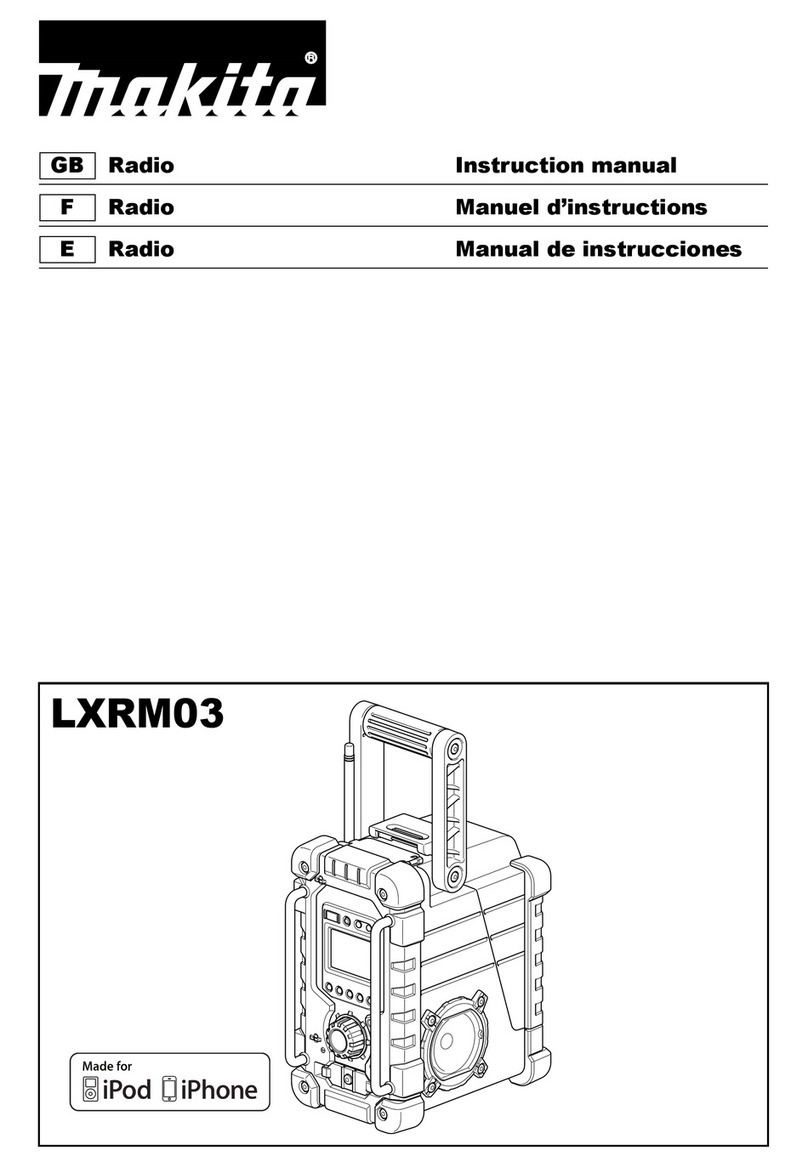
IGNITION NOISE INTERFERENCE
Use of a mobile receiver at low signal levels is normally limited by the
presence of electrical noise. The primary source of noise in automobile installa
tions is from the generator and ignition system in the vehicle. Under most
operating conditions, when signal level is adéquate, the background noise does
not présent a serious problem. Also, when extremely low level signais are being
received, the transceiver may be operated with vehicle engine tumed off. The
unit requires very little current and therefore will not sigmfîcantly discharge the
vehicle battery.
Even though the COBRA 148GTL-DX has ANL and NB Controls, in some
installations ignition interférence may be high enough to make good communi
cations impossible. The electrical noise may corne from several sources. Many
possibilities exist and variations between vehicles require different solutions to
reduce the noise. Consult your COBRA dealer or a 2-way radio technician for
help in locating and correcting the source of severe noise.
ANTENNA
Since the maximum allowable power output of the transmitter is limited by
the FCC, the antenna is one important factor affecting transmission distance.
Only a properly matched antenna system will allow maximum power transfer
from the 50 ohm transmission line to the radiating element. In mobile installa
tions (cars, trucks, boats, etc.), an antenna system that is non-directional should
be used.
A vertically polarized, quarter-wavelength whip antenna provides the most
reliable operation and greatest range. Shorter, loaded-type whip antennas are
more attractive, compact and adéquate for applications where. the maximum
possible distance is not required. Also, the loaded whips do not present the
Problems of height imposed by a füll quarter-wavelength whip.
Mobile whip antennas utilize the metal body of the vehicle as a ground plane.
When mounted at a corner of the vehicle they are slightly directional, in the
direction of the body of the vehicle. For ah practical purpose, however, the
radiation pattern is nondirectional. The slight directional characteristic will be
observed only at extreme distances. A standard antenna connector (type SO
239) is provided on the transceiver for easy connection to a standard PL 259
cable termination.
If the transceiver is not mounted on a metal surface, it is necessa'ry to run a
separate ground wire from the unit to a good metal electrical ground in the
vehicle. When installed in a boat, the transceiver will' not operate at maximum
efficiency without a ground plate, unless the vessel has a Steel hull.
Before installing the transceiver in a boat, consult your dealer for information
regarding an adéquate grounding system and prévention of electrolysis between
fïttings in the hull and water.
-9-
